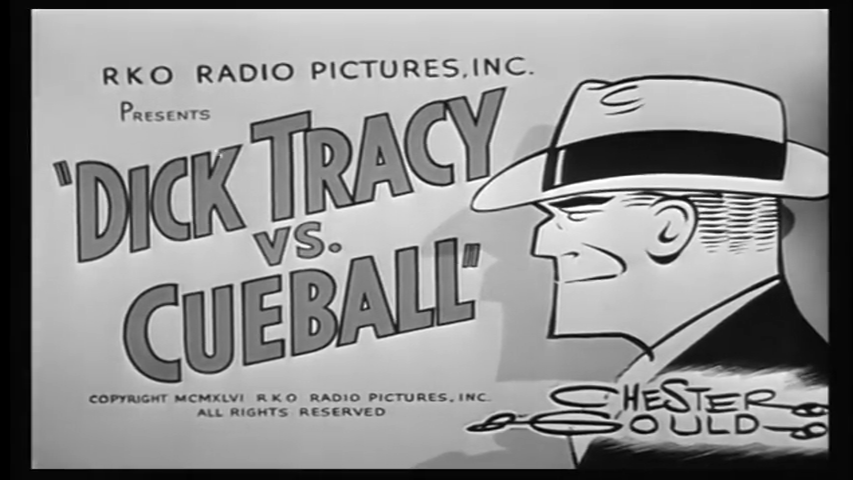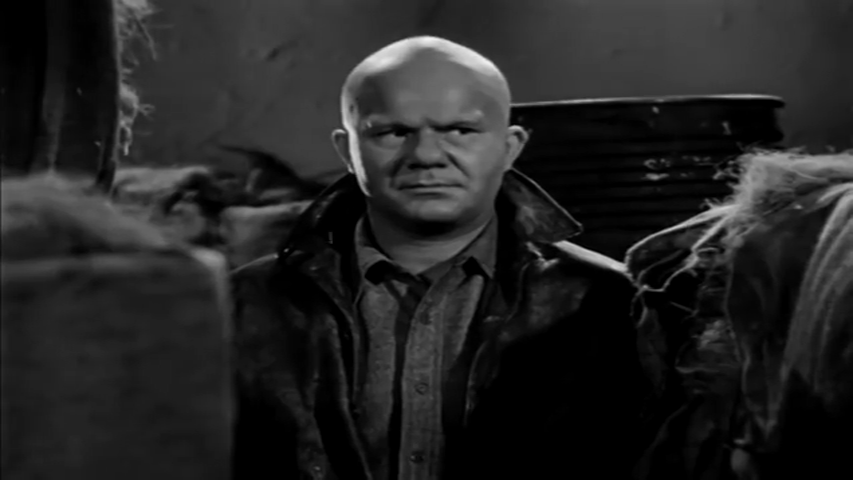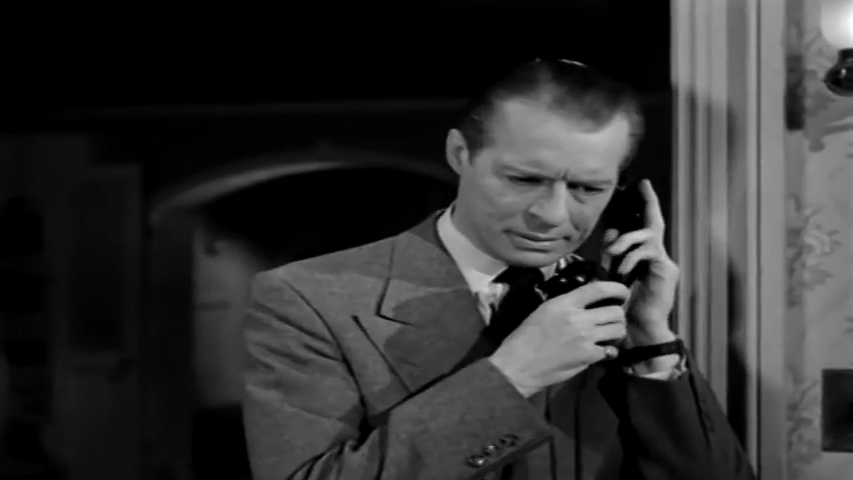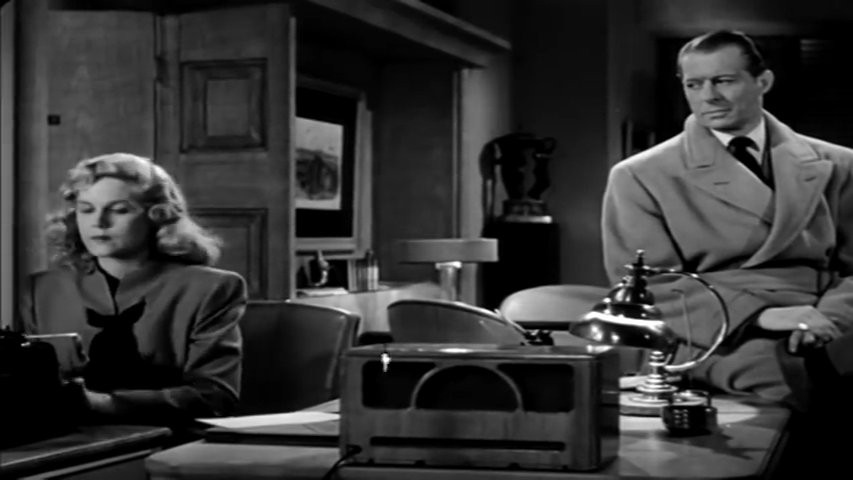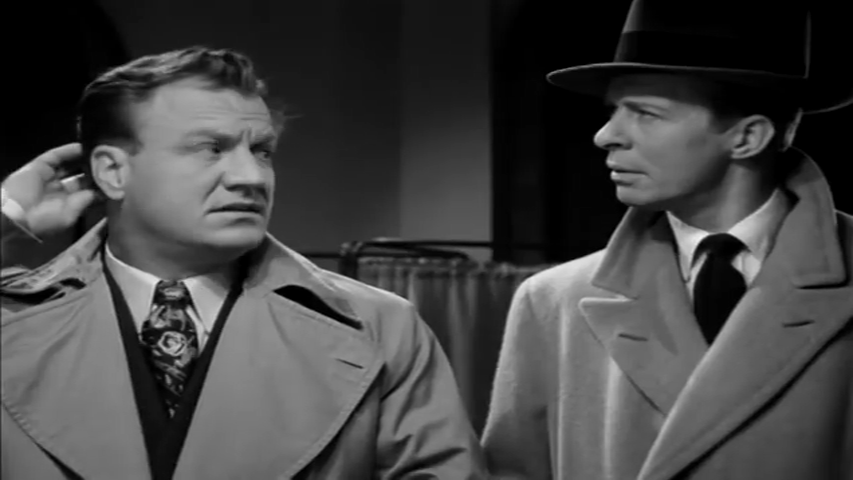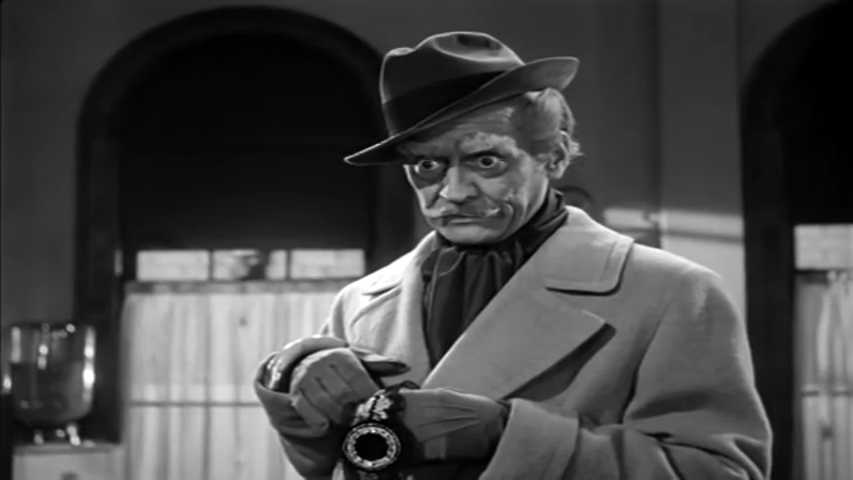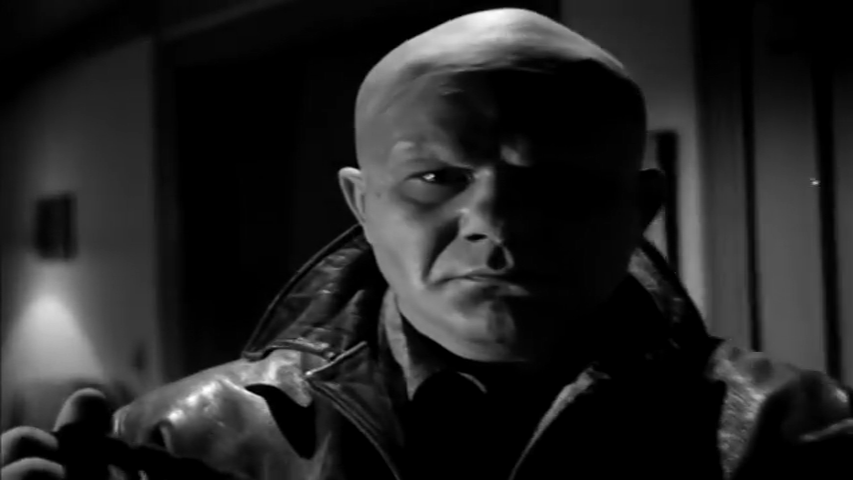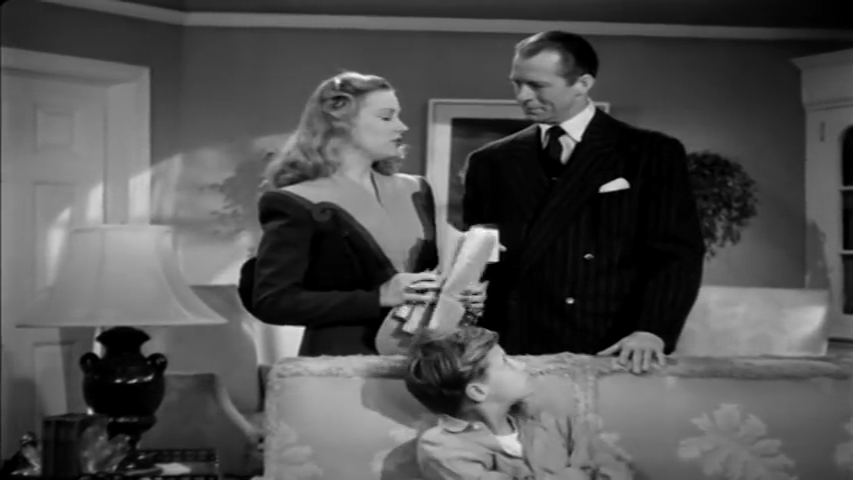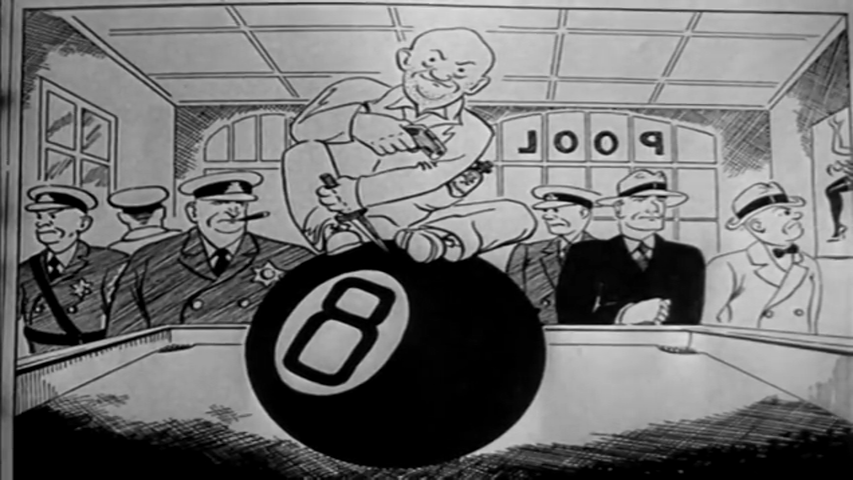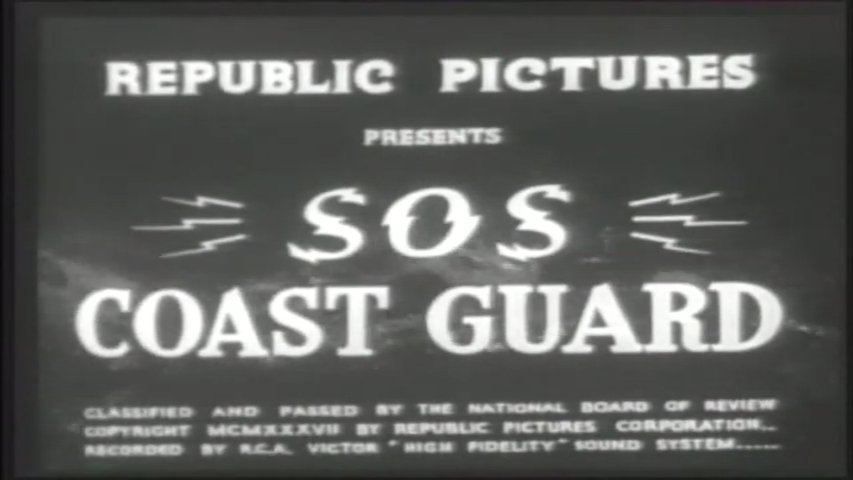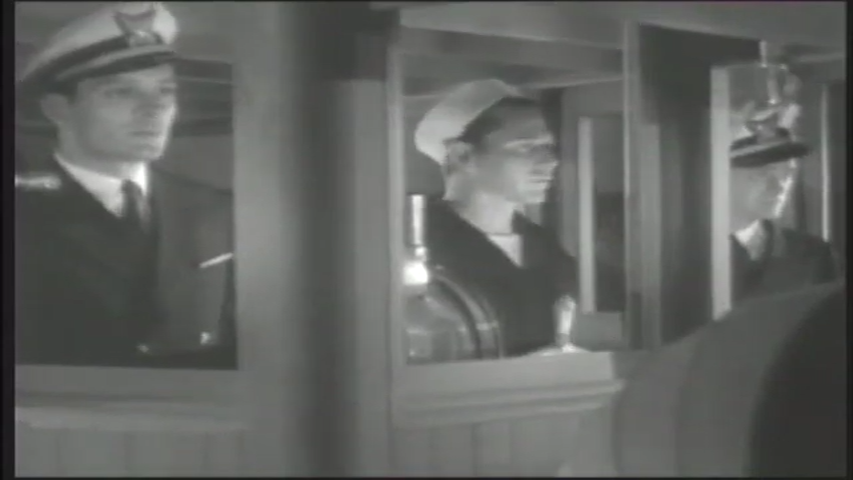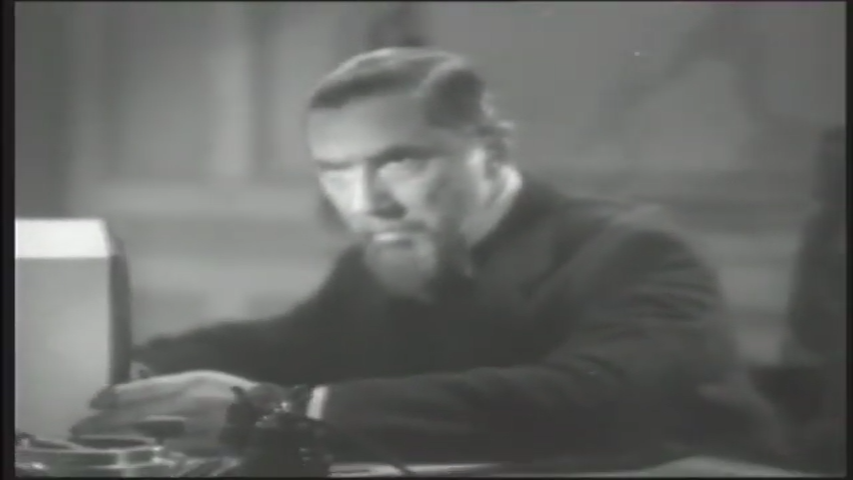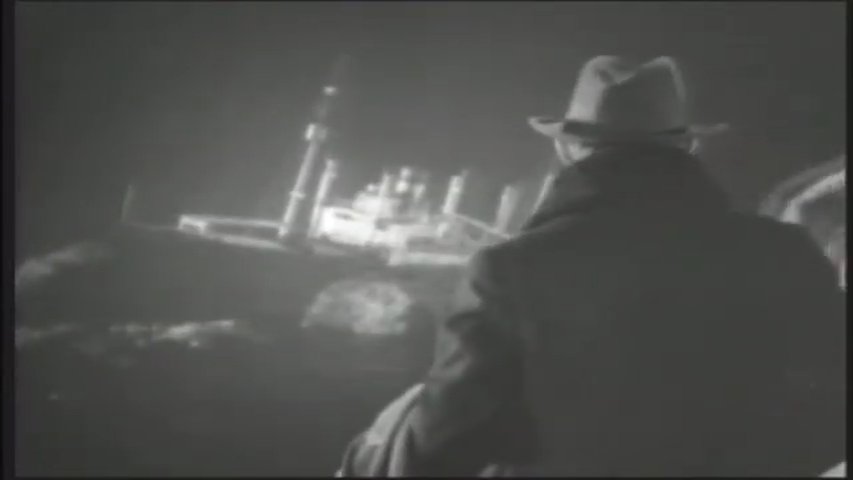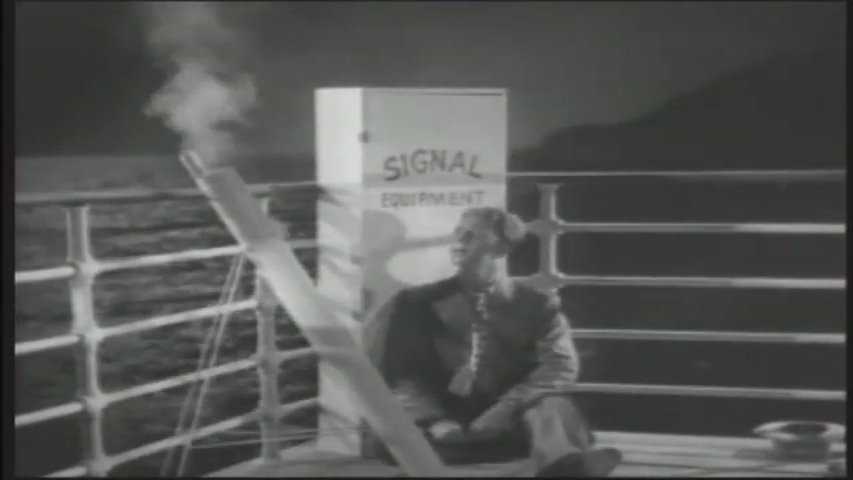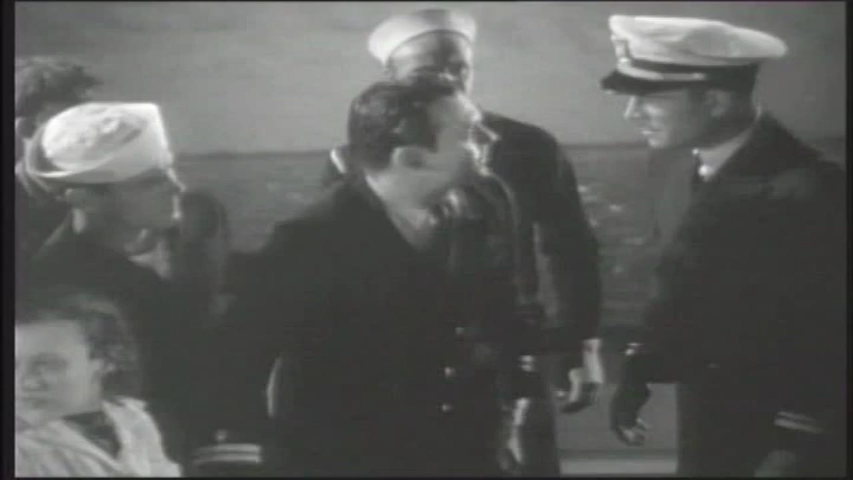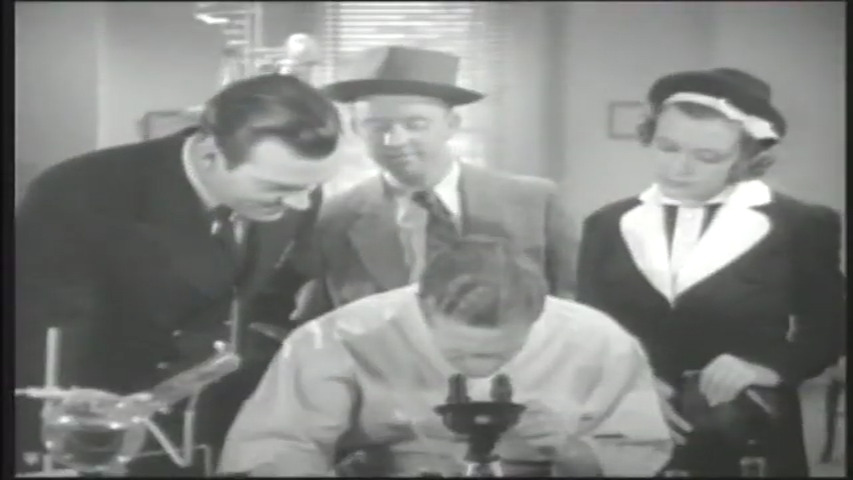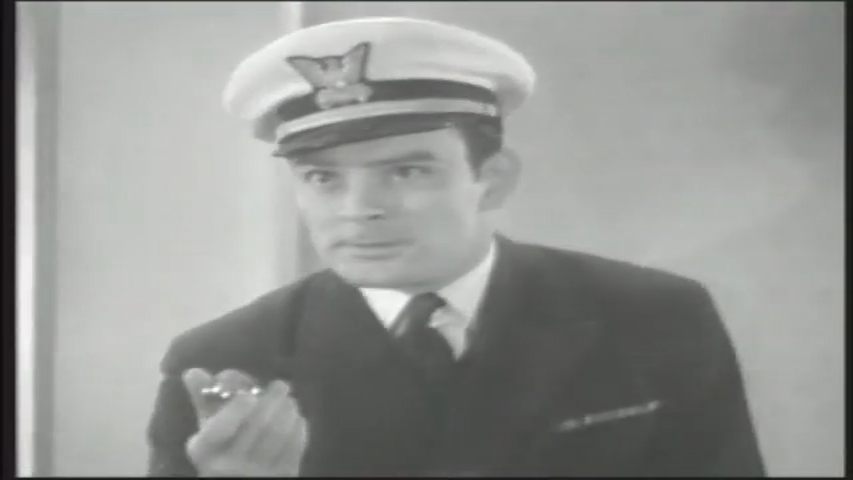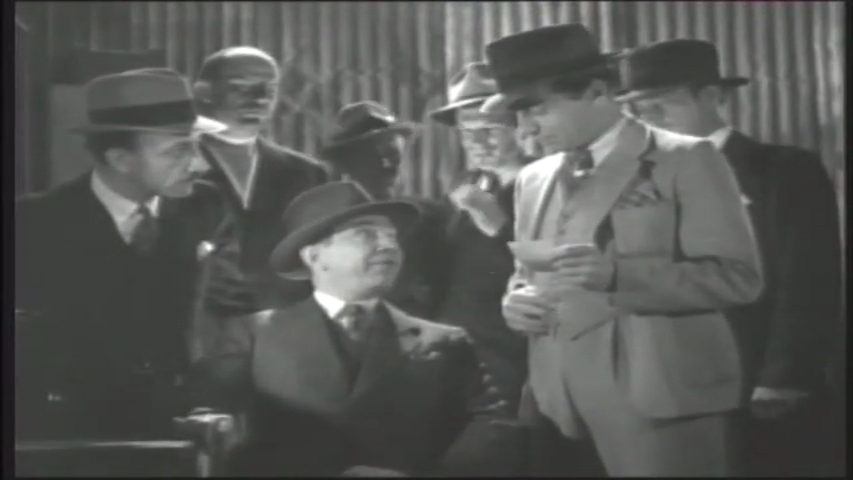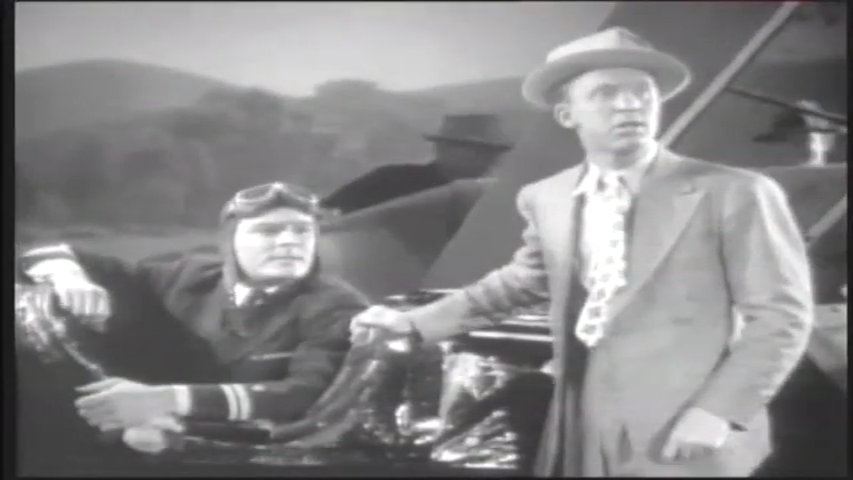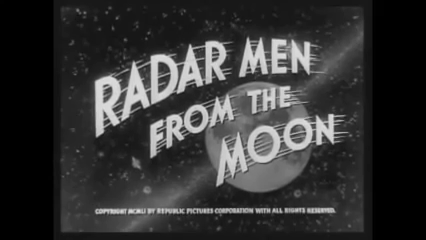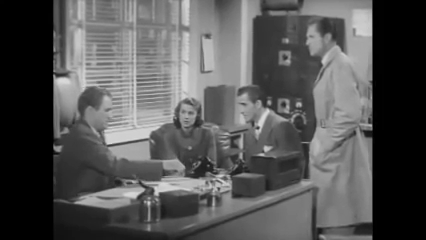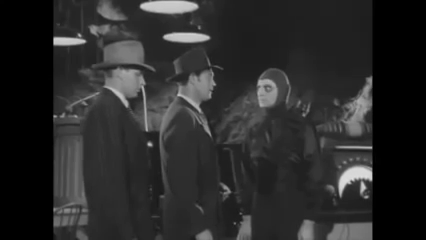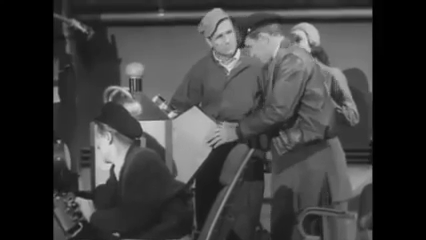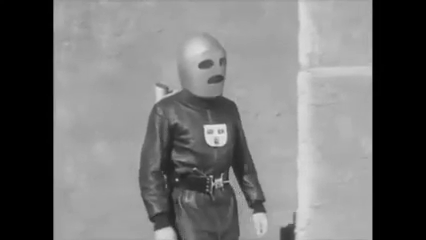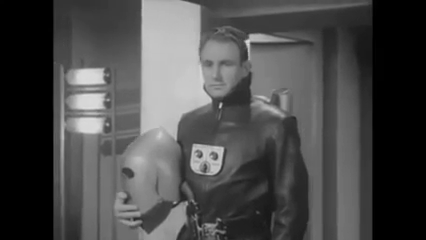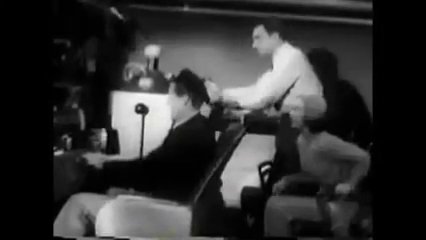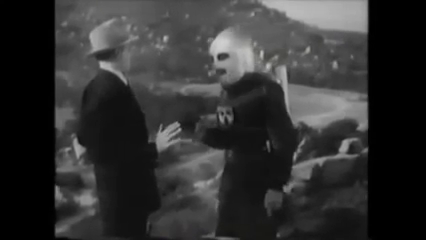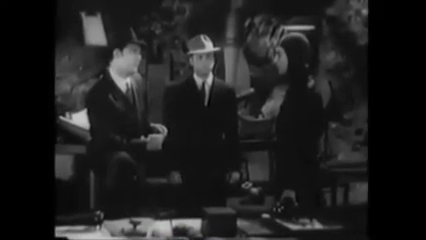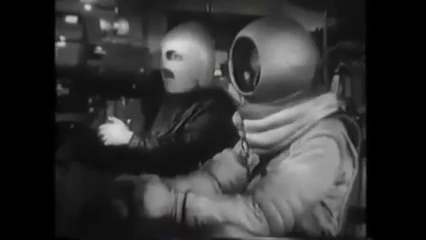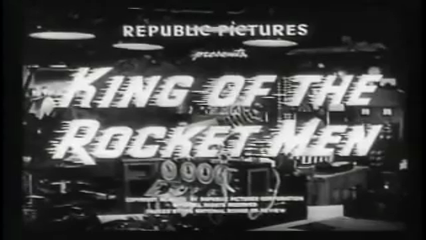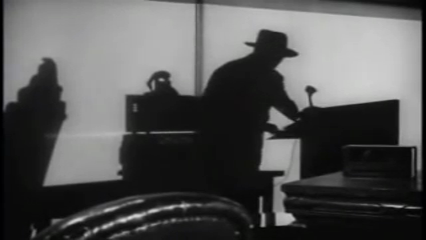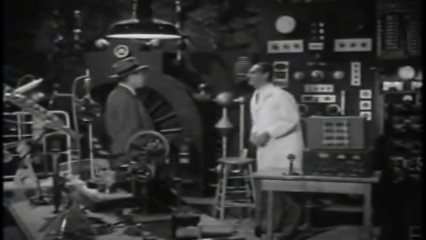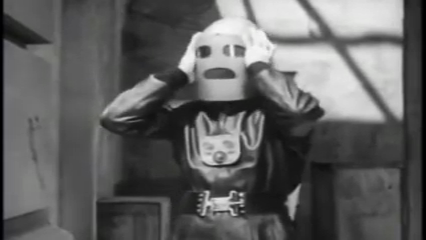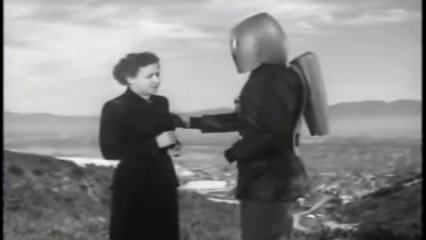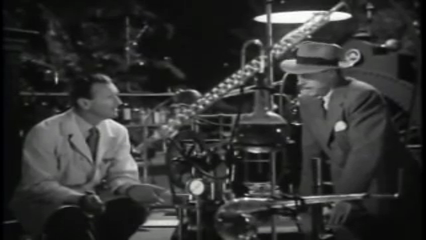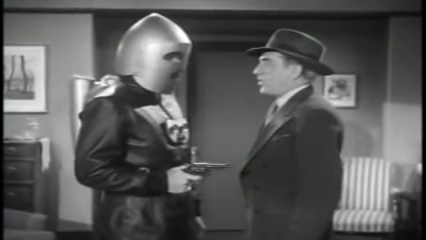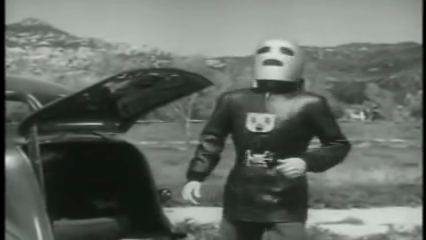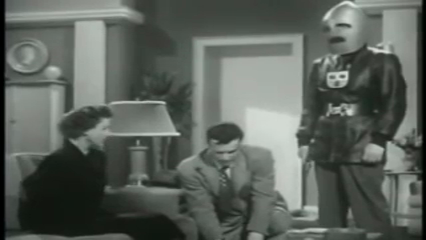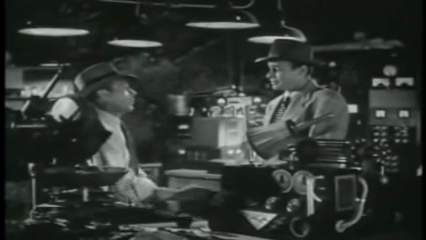-
#391 – Dick Tracy vs. Cueball (1946)
Dick Tracy vs. Cueball (1946)
Film review #391
Director: Gordon M. Douglas
SYNOPSIS: Police detective Dick Tracy is called to a murder scene on board a ship where a jeweller has been strangled and a valuable set of diamonds has been stolen. As he continues to investigate, he uncovers a conspiracy involving multiple people to sell the diamonds, and must apprehend the man known as Cueball, who is killing off the people involved…
THOUGHTS/ANALYSIS: Dick Tracy vs. Cueball is a 1946 crime-noir film and the second Dick Tracy feature film. As the film opens, we see a boat docking into port when a thief breaks into a jeweller’s cabin, killing him and stealing the diamonds. Dick Tracy is called out to investigate the murder, and suspects a much larger conspiracy to re-cut and sell the diamonds. The story follows the investigation through all its twists and turns, and it is a story that is easy enough to follow while having enough interesting developments to keep one’s interest. At just over sixty minutes, it is not a long film, but it still feels full of content along with offering a complete experience. There’s not too much else to say different than what I wrote for the review for the previous film: its’s more of the same, mixing comic book characters with the crime-noir setting resulting in an easy to follow story, but an entertaining one at the least. Unlike its predecessor though, this one feels a little more down to earth, without the odd mystical elements that didn’t quite belong or go anywhere.
The protagonists from the first film all return, and as there, each of them feel a little like the comic book characters they are based on. The various suspects too have their own particular appearances and personalities, and it’s fun watching them all interact with each other. Everybody has something going on or a role to play, and no one feels wasted. The main antagonist, Cueball, definitely feels very menacing, and a genuine threat throughout, made even more menacing by the use of lighting throughout in typical crime-noir fashion. Tracy’s assistant Pat Patton provides a bit of comic relief, along with the young Junior, and Tracy’s girlfriend Tess Trueheart also gets a role to play in the investigation. Overall, Dick Tracy vs. Cueball is very similar to its predecessor released in the previous year, but also manages to make some improvements by tightening the story, making it flow better, and making the villains more menacing. It’s not an exemplary example of the crime-noir genre, but it’s a good combination of it with the comic strip characters and personalities that gives it a bit of a unique flair. If you enjoyed the first one, you will certainly enjoy this one too.
-
#390 – S.O.S. Coast Guard (1937)
S.O.S. Coast Guard (1937)
Film review #390
SYNOPSIS: The renegade scientist Boroff has invented a disintegrator gas that unsurprisingly disintegrates everything around it when released. Boroff’s ship gets in trouble at sea, leading the coast guard to mount a rescue. However, he is recognised by some reporters along for the ride as a wanted criminal and they give chase as Boroff tries to escape. When one of the coast guards is killed as Boroff escapes, his brother Lt. Terry Kent, also a member of the coast guard, swears revenge and he and the reporters Jean Norton and Snapper McGee attempt to unravel the mystery surrounding Boroff and to put a stop to his evil schemes.
THOUGHTS/ANALYSIS: S.O.S. Coast Guard is a 1937 movie serial by Republic Pictures. The serial starts off with a ship in distress off the coast and the coast guard being deployed. Jean Norman, a newspaper reporter and Snappy McGee, a photographer for the newspaper, recognise the man rescued from the ship as Boroff, a wanted scientist who has been developing deadly weapons to sell to foreign powers. The coast guard give chase, which ends up in the death of one of them, Ensign Jim Kent. His brother, Lt. Terry Kent, who is also a member of the coast guard, swears revenge, and attempts to track down Boroff with the help of Jane and Snapper. The serial unfolds very much like every other serial, so there shouldn’t be no surprise with the cliffhangers, chases and fist fights that fill the chapters. The setting of the coast guard does make it stand out a little, with the scenes at sea and on the ships being well executed. There’s enough variety and a tangible thread of story all the way throughout to make it a watchable serial, but again the format does show its age, and if you’ve seen one you’ve more or less seen them all. The format meant that a lot of content could be produced quickly and at a small cost, but nothing original or innovative was attempted outside of those original constraints.
The characters are one of the noteworthy aspects of the serial, with some recognisable faces amongst the cast. The character themselves are pretty typical: you have the young, courageous American male for the lead, one female character, a mad scientist villain, and a comic relief character. Lt. Terry Kent is the typical lead, this time played by Ralph Byrd, who would be recognisable from the successful Dick Tracy serial that was released earlier in the same year. His character wears a hat most of the time so he distinguishes himself from Tracy enough that you wouldn’t be distracted by the similarities, but Byrd’s appearance in this serial definitely rides the success that Dick Tracy had. The villain is played by famous horror actor Bela Lugosi, who is not in a horror film role because of the ban on making horror movies that was put into effect between 1936 and 1938. The name of his character Boroff is more than likely a reference to fellow horror movie actor and Lugosi’s somewhat rival Boris Karloff. The character of Snappy McGee is very similar to the character of Mike McGurk in the Dick Tracy serial, and I was quite surprised to see it wasn’t the same actor, as they are very similar in terms of looks and mannerisms. Jean Norman’s actress Maxine Doyle also went on to marry the director of this serial (William Witney), so all round an interesting bit of trivia from the casting, even though their characters aren’t as stand-out.
Being set at sea for a decent amount of the runtime, there’s a lot of scenes on the ocean which are all executed fairly well. In the opening chapter we see Boroff’s ship the Carfax caught in a storm, and the set definitely looks like a boat in a storm, with huge waves soaking the set and the actors. There’s some decent effects and props which also breathe some life into the predictable storyline. While setting a serial in the coast guards might not sound as thrilling as a Flash Gordon serial or the like, it still manages a decent story with a good cast. If you liked the Dick Tracy serial, no doubt you would have sought this serial out as well.
-
#389 – Radar Men from the Moon (1952)
Radar Men from the Moon (1952)
Film review #389
Director: Fred C. Brannon
SYNOPSIS: After a series of devastating attacks across the planet, Commando Cody is assigned to travel to the moon in a rocket ship to investigate the theory that the attacks are being launched from there. While there, he finds that the ruler of the moon Retick has been ordering the attacks in order to pave the way for a full scale invasion of Earth, and only Commando Cody and his friends can stop it…
THOUGHTS/ANALYSIS: Radar Men from the Moon is a 1952 movie serial comprised of twelve chapters. The first chapter opens showing aerial attacks across the globe, destroying vital infrastructure. Commando Cody and his friends are visited by a government official who believes that the attacks are originating from the moon. Cody has also come to the same conclusion and coincidentally his friend ted has just finished building a rocketship that can fly to the moon. Cody and his friends travel to the moon to investigate, where they find the leader of the moon, Retik, has ordered the attacks to prepare for a full-scale invasion as the moon’s atmosphere is evaporating and making it uninhabitable. Cody manages to steal one of their ray guns and take it back to Earth, while one of the Moon’s inhabitants, Korg, who is stationed on Earth, tries to get the ray gun back and stop Cody along with his hired goons. The fundamentals of the story have been done in many serials before (Flash Gordon, Brick Bradford etc.) so it’s nothing really original, and it’s got all the usual action scenes, chases, cliffhangers and the like. I’ve reviewed so many of these serials now they all somewhat blend into one, and it takes something special to draw my attention. As I have mentioned before, this is the sort of thing you could get away with at the time, as there was no home media or way to rewatch them, and as these are mostly aimed at a younger audience, they may not have seen the older ones, so it was easy to get away with it. With the onset of television at this time though, people could start watching this serial format at home rather than going to the theatre every week, so serials would become less and less popular, although not too many people would have televisions, so the serial format had a few years of life yet. By this time though, the tropes of the format had been well and truely done to death.
This serial is the first to feature Commando Cody, who would have another serial a year later. The flying rocket suit he uses however, was featured in the 1949 serial King of the Rocket Men. There’s no continuity between the two, but as mentioned the younger audience would probably not have watched the previous serial, but may recognise the imagery, as it was quite a unique suit, and the flying mechanics and effects were something new. Radar Men from the Moon re-uses a lot of the rocket suit footage from that film of him flying through the air and such, which again it could be gotten away with at the time. The rest of the characters are the usual cast for the format: one female, a sidekick, the villainous henchman and the alien leaders dressed in bizarre clothing so you know they are alien. There’s some interesting props and sets when the cast are on the moon, with vehicles and underground bases, but that’s the only thing that really stands out. Overall, Radar Men from the Moon is just another standard sci-fi serial. Nothing horrifically bad about it, but nothing to set it apart from all the others that do the exact same thing. Just another one for the pile I guess.
-
#388 – King of the Rocket Men (1949)
King of the Rocket Men (1949)
Film review #388
Director: Fred C. Brannon
SYNOPSIS: A man calling himself Dr. Vulcan is killing off prominent scientists. After one such scientist, Dr. Millard manages to escape an attempt on his life, he goes into hiding and develops a rocket suit that allows the wearer to fly through the skies. He enlists fellow scientist Jeff King to wear the rocket suit and thwart Dr. Vulcan’s schemes.
THOUGHTS/ANALYSIS: King of the Rocket Men is a 1949 sci-fi serial. The story opens up with the mysterious Dr. Vulcan killing off members of the Science Associates, a group of top scientists. One such member, Dr. Millard, manages to escape one of Vulcan’s traps and goes into hiding, leading Vulcan to believe he is dead. While in hiding, Millard completes his invention of a rocket suit that allows the wearer to fly thanks to a jet pack. Millard enlists the help of Jeff King, another member of Science Associates to wear the suit and track down Dr. Vulcan. The story involves the usual serial tropes, with Dr. Vulcan’s true identity being hidden throughout the serial until the end, and with King figuring out the Vulcan is actually one of the members of Science Associates, he has to work out which one it is, which again is a familiar set-up for these serials. Some of the chapters provide a bit of variety, such as the one where King’s ally Ted suspecting King to be Vulcan and vice versa, which leads to an interesting confrontation, and one which I have not seen before in the serial format, but other than that its the usual back-and-forth between heroes and villains chasing each other down with various plans and traps.
The highlight of this serial has got to be the rocket suit, which allows King (and sometimes Millard) to fly through the air. This is the first serial of three to use the rocket suit, but the only to refer to the hero as “rocket man”. The other two, Radar Men from the Moon and Zombies of the Stratosphere, are all unconnected from one another, and do not give the masked hero a name. Since this serial like most is aimed at getting young viewers into the theatre each week for the next chapter, the rocket suit would definitely have been a hit with them, as there really wasn’t anything like it when it came out. Older viewers would perhaps have been less than engaged with all the usual tropes being wheeled out, but the serial isn’t really for them. There’s plenty of other inventions shown throughout the serial which are interesting enough to change up the pacing, but ultimately it does rely on the tried and tested serial elements.
The end of the film also deserves note, as in some sense the villain wins. Dr. Vulcan steals a device known as the Decimator, and uses it on a tectonic fault-line, causing a huge tidal wave that essentially destroys Manhattan. The footage of the tidal wave is taken from the 1931 film Deluge, in which a rising of sea levels causes most of the world’s population to be wiped out. The destruction looks good and devastating, and it still holds up despite being made nearly twenty years earlier, but obviously if you’ve seen it before it lessens its impact being used a second time here. Nevertheless, it’s very unlikely viewers of this serial would have seen it being used in Deluge due to the time elapsed and there being no re-runs or home releases back then. King manages to eventually stop Dr. Vulcan, but after New York City has been destroyed, and the serial ends with the ambiguous promise to rebuild New York ‘better than ever’. Not exactly a solid resolution, but these serial never are after investing nearly three hours watching them. King of the Rocket Men was released in 1949, after the serial format had peaked, but there were still some good ones being released (most notably the Superman serials, which were quite popular, and some of the best examples of the format). “Rocket man” is somewhat a superhero, with his flying ability and masked persona, and this no doubt would have made the serial stand out, but a lot of the other elements of the serial are pretty standard for the format. Overall it’s a little more interesting than the average serial, but not outstanding.
